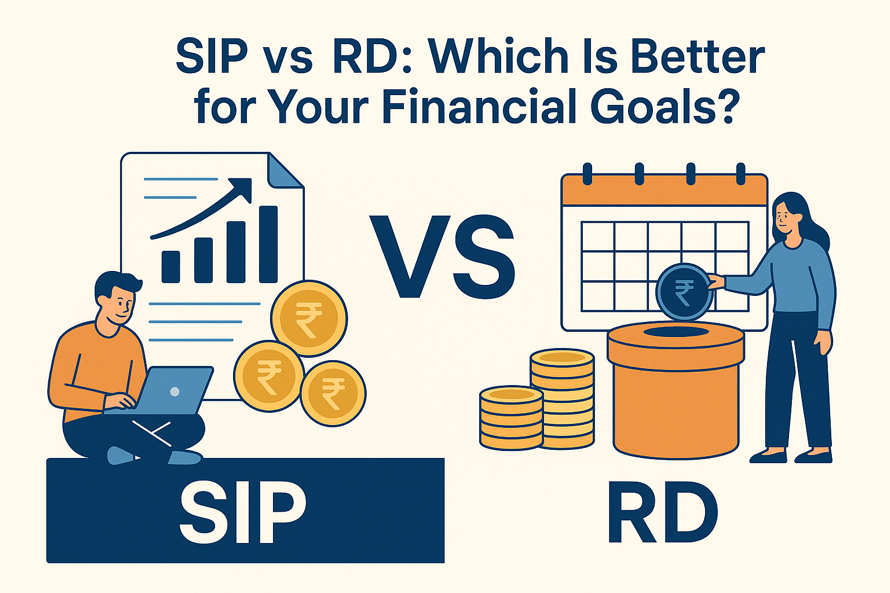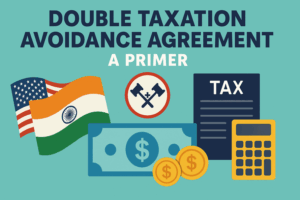
What Is SIP (Systematic Investment Plan)?
A Systematic Investment Plan, or SIP, is an easy way to enter the world of mutual funds. It lets investors invest small, regular amounts each month instead of committing a big lump sum at once. The idea feels familiar, consistent saving, automated investing, and long-term compounding quietly working in the background.
SIP turns everyday earners into steady investors. Each contribution buys mutual-fund units, and over time those little bits add up. The beauty lies in habit. You keep investing, markets keep moving, and your wealth keeps building.
How SIP Works
Every SIP begins with three choices: fund, amount, and frequency. Once set, the amount auto-debited from the bank account gets invested in the selected mutual fund.
Here’s where rupee-cost averaging enters the picture. When the market dips, your SIP amount buys more units; when prices rise, it buys fewer. The average cost settles over time. Add compounding, and the growth multiplies quietly.
What started as a small monthly step turns into a growing financial habit that builds long-term wealth.
Types of SIPs
Investors enjoy several SIP styles:
- Regular SIP: Fixed amount, fixed interval, pure consistency.
- Top-Up SIP: Lets you raise your contribution as your income increases.
- Flexible SIP: Adjusts or pauses when cash flow changes.
- Perpetual SIP: Runs indefinitely until you decide to stop.
- Trigger SIP: Starts automatically when a preset market or date condition hits.
Each version serves a unique need, giving investors full control over pace and comfort.
Benefits of SIP
SIP rewards patience. It builds wealth while teaching discipline. Every month’s investment works toward a future goal, retirement, education, a house, or freedom from financial stress.
Because SIPs ride on mutual funds, they tap into market growth, offering potential for stronger returns than traditional savings options. And thanks to digital platforms, setting one up takes just a few minutes.
SIP keeps things simple: invest regularly, stay consistent, and let compounding handle the math.
What Is RD (Recurring Deposit)?
A Recurring Deposit, or RD, sits at the intersection of habit and security. Offered by banks and post offices, it helps people deposit a fixed amount each month for a fixed term. The interest rate stays locked till maturity, creating predictable growth.
RD suits those who like assurance. It feels stable, money goes in monthly, interest accrues quarterly, and the maturity amount arrives right on time.
How RD Works
When you open an RD, you decide the monthly deposit and tenure. The bank automatically transfers that sum each month, adds quarterly compounding, and pays you the full value plus interest at the end.
It’s straightforward: steady deposits, a fixed timeline, and guaranteed maturity. That clarity keeps investors confident.
Features of RD
- Consistent monthly deposits
- Fixed tenure options from months to years
- Locked-in interest rate
- Guaranteed maturity amount
- Nomination and renewal choices
- Wide availability across banks and post offices
RD delivers predictability in a world where markets gyrate frequently.
Benefits of RD
RD encourages steady saving. It’s perfect for short-term goals, an upcoming vacation, child’s school fees, or an emergency cushion.
It also builds the habit of commitment. Every deposit becomes a small step toward discipline. Over time, the total feels satisfying, a financial milestone achieved through consistency.
Key Differences Between SIP and RD
Both SIP and RD rely on regular deposits, yet their foundations differ. One connects you to markets, the other to fixed income.
Investment Nature (Market-Linked vs. Fixed Return)
SIP channels funds into mutual funds. Returns move with the market, which means higher growth potential. RD guarantees a fixed rate decided at the start. One thrives on performance, the other on certainty.
Risk Factor
SIP carries market movement risk, but long-term investors usually benefit from cost averaging and compounding.
RD stays shielded. The return never changes. That reliability attracts investors who value stability over excitement.
Returns and Wealth Creation
Equity-linked SIPs have historically outperformed RDs across long periods. Markets reward time and consistency.
RDs, however, assure a fixed amount. They protect the capital while providing a predictable income. SIP aims for wealth expansion; RD ensures steady accumulation.
Liquidity and Flexibility
SIP wins in flexibility. Investors can start, pause, or withdraw anytime. Partial redemption remains an option without dismantling the entire plan.
RDs carry withdrawal conditions. Closing early leads to reduced interest. The design promotes completion rather than interruption.
Taxation
SIP gains fall under capital-gains tax, depending on tenure and mutual-fund type. Long-term holdings often receive favorable treatment.
RD interest counts as income and faces a tax deduction once it crosses the exemption threshold.
Tax-wise, SIP can be more efficient for long-term investors, especially through equity funds.
Accessibility and Ease of Investment
Both score high on accessibility. SIPs run through mobile apps and investment portals. RDs open instantly at banks or post offices.
SIPs, however, add features, such as auto-debit, portfolio tracking, and diversification across sectors, making them appealing to tech-savvy investors.
Which Is Better for Different Investor Profiles?
The right pick within the SIP vs. RD debate depends on investor habits and target. People differ in comfort levels, timelines, and expectations.
For Conservative Investors
RD fits the calm-and-steady crowd. It promises returns, delivers them quietly, and carries no market exposure.
SIP offers excitement through growth potential, ideal for those ready for mild market movement in exchange for better compounding prospects.
For Young Professionals
SIP stands out for this group. Starting early allows money to compound over decades. Even small monthly investments snowball into sizable wealth later.
RD serves as a starter option for building a savings habit before transitioning to market-linked plans.
For Long-Term Wealth Builders
For long-term creators, SIP becomes the go-to choice. It taps into equity growth, builds over time, and supports major goals like retirement, home purchase, or education planning.
RD provides stability but limited expansion for long durations.
For Short-Term Savings
RD scores for near-term needs, travel, gadgets, or tuition fees. The short tenure and fixed return create certainty.
Debt or liquid-fund SIPs can serve similar purposes, but RD’s simplicity wins convenience points.
SIP vs. RD: A Comparative Analysis
| Feature | SIP | RD |
|---|---|---|
| Nature | Market-linked mutual fund plan | Fixed bank deposit |
| Risk | Market-driven variation | Stable fixed return |
| Return Type | Variable growth-based | Fixed assured income |
| Liquidity | High; redemption anytime | Limited; early closure cuts interest |
| Taxation | Capital-gains tax based on tenure | Interest taxable as income |
| Tenure | Flexible per goal | Fixed, pre-chosen period |
| Ideal For | Long-term wealth building | Short-term disciplined saving |
Pros and Cons of SIP and RD
Every product carries its balance. SIP and RD complement different needs across financial plans.
Pros and Cons of SIP
Pros
- Builds wealth through compounding power
- Promotes consistent investing habits
- Easy to start, modify, or pause
- Aligns with long-term goal planning
Cons
- Returns fluctuate with market cycles
- Demands patience before visible growth
Pros and Cons of RD
Pros
- Guarantees maturity value
- Perfect for conservative investors
- Strengthens saving discipline
- Simple opening and management process
Cons
- Limited return potential
- Restricted liquidity until maturity
Final Verdict: SIP or RD – Which One Should You Choose?
The SIP vs. RD debate isn’t about superiority; it’s about suitability. Each serves a purpose.
SIP fits those chasing growth, wealth creation, and long-term goals. RD fits those valuing certainty, safety, and near-term milestones.
A balanced portfolio often combines both. SIP handles growth ambitions; RD manages short-term stability. Together, they shape a financial plan that feels both adventurous and secure. But before you invest, make sure you are taking advice from your financial advisor.
It’s your hard-earned money. Hence, every investment you make must be properly analyzed beforehand. Avoid risky investments if you are new to investing.
FAQs
Is SIP better than RD for long-term investment?
SIP usually benefits long-term goals because it combines market exposure with compounding. Over time, the growth potential often outpaces fixed-income instruments.
Can I lose money in SIP but not in RD?
SIP values fluctuate with markets, yet patient investors typically see positive outcomes as markets expand. RD ensures fixed returns defined by the issuing bank.
Which has better tax benefits – SIP or RD?
Equity-fund SIPs qualify for long-term capital-gains benefits after a year. RD interest is taxed like regular income. Long-term SIPs are generally more tax-efficient.
Can I do both SIP and RD at the same time?
Absolutely. Many investors maintain both. SIP grows long-term wealth, while RD supports short-term savings and stability.
Is SIP suitable for beginners?
Yes. SIP is beginner-friendly. It automates investing, starts small, and instills financial discipline without demanding expert timing.
What happens if I miss an RD installment?
Banks usually allow a small grace period for payment. Missing one might slightly reduce the overall maturity value, but regularity keeps the plan smooth.
Does SIP guarantee returns like RD?
SIP returns depend on fund performance and market momentum. RD provides a fixed interest. SIP focuses on growth, RD on certainty.







